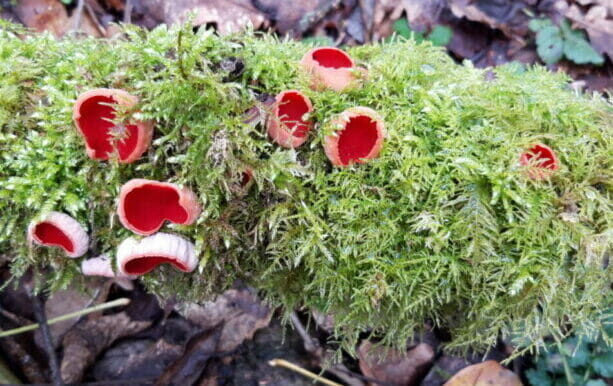Biodiversity
Wildlife & Habitat
In geological terms, the Clyne River is a ‘misfit stream’. It gently meanders through the steep sided valley, and although the Clyne is classed as a main river, and it’s very pretty, it’s hardly the roaring torrent associated with deep rock erosion. Really, the river is an opportunist – it runs along a course carved out by the torrents of melt water containing ice and debris from the retreating glaciers as they drained at the end of the ice-age.
The Clyne River rises around Fairwood Common and continues down the Valley to the sea at Blackpill. The former LMS railway line, which is now a cycle way and footpath, broadly followed the same route, and these two features form the spine of the Valley.

Would you like to get involved?
There are a variety of diverse habitats in the Valley
1. The River
Heavily polluted in the past, is now much cleaner. Leachate from the former refuse tip is less, although the red iron ore still seeps in from innumerable sources as a relic of the past mine working. Marsh-marigolds, primrose, violets, garlic, wood anemone and wood sorrel are just some of the flowers you can expect to find along the river.
On the south western border, within the Gower AONB, are remnants of ancient woodland bordering the open fields of Clyne farm. Clyne woods. Hen Parc woods, and Mill wood contain splendid trees, mainly beech, oak and birch, that form belts of cathedral woodland carpeted with bluebells in the spring. Swansea Council has, over a number of years, carried out a major rhododendron clearance programme that has opened up a lot of the woodland areas.
2. Woodland
3. De-forested, open areas of Common Land
Plant species not found in woodland grow here and increase the biodiversity in the Valley.
Although now virtually inaccessible, it is a designated SSSI and was locally famous at one time for its fossils, and for the huge rock that is pennant limestone left behind after the mudstone around it was extracted for brickmaking.
4. The former clay pit
5. Wetlands
At the north eastern end of the Valley is the species rich Killay marsh. There are also four lakes/ponds and two mill leats and a canal in the valley as well as permanent water ditches and some very muddy areas.
It closed in 1984, has largely been reclaimed by scrub, particularly bramble, small willow and wetland grasses. But it is a haven for birds and animals, providing shelter in winter, and in April marsh orchids thrive, and the rare bee orchid can be found.
6. The former refuse tip
7. Ancient roadways, dram ways and railways
These have been corridors for seeds, insects, mammals and people for a very long time. Foxes, squirrels, moths, butterflies, frogs, newts, lizards, bees, bats and a great variety of birds, from goldfinch to buzzard, from heron to wren, to dipper to kingfisher (rare but there) can be spotted. Because the Valley is on a migration route, winter is a very interesting time for bird watchers with redwing, snipe, woodcock, and widgeon amongst those taking shelter or rest here.